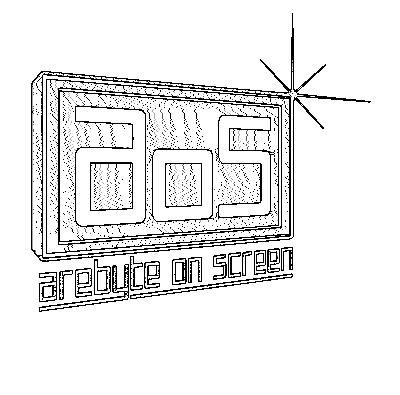# Episode 3
Dizzying senses
We live in the Aerial,
born of the polymorphous affinities within nonhuman substance,
constituted by the particles of virtual matter
as trans-material affections
that surround non/human intention.
Caring for the sum of the social implications
that the technological and ecological transformations,
in a global machine of techno-physical governance and labour,
do on and with our bodies.
Open to the variability and contingency of atomic and molecular relations.
Sculpturing the patterns of our body sex.
Embodiment is taking up fold in bodies.
Not transcending gender or sex
but skin is always intractably skin.
I prefer to be of granite minerals
as I am fond of their life cycles
as a means of passing, the passage of time.
As trans-substiantive impact.
Like a gentle black hole,
soft pulling at my insides, slow and steady
I carve the dark as it hides my fear.
Our desire for the more-than-possible.
Feel the breath when I breath
Feel the pain when I push .
So cold and tight the touch.
Like the melted ice frozen.
Comets open our mouth in thirst
Watering our neuro pathways woven by billions of lives in crisis.
As time-less aggregates,
world making from those in crisis,
against the violent normalizations
of a universal claiming to speak for the particular.
Embodying centuries of screaming on the ways we want to live.
Nourishing these frozen roots for centuries to come.
We are wires for transmission,
wires as metabolisms
of transitional embodiments
made of black affect,
pre-discursive intensities that confront others death.
Hyper coma.
More than proxy-gas.
In a bleak post-nuclear landscape of revenge,
and irradiated monsters,
radioactive waste masks the sobering reality of toxic legacies
beyond planetary geographical imagination.
Develop the capacity to live under-gas, move
above the cloud and return undetected.
Make friction with the burning aerial
and see what your synthetic body can learn you.
Unknown voices sound frozen far.
Tearing the cloud line, the sun breaks clear.
The body in front of me is faceless facing the sky.
We are delayed in Minneapolis due to the fog in Philadelphia.
The Sun is slowly brightening
at a current rate of about 10% per billion years,
destined to become a red giant in some 7. billion years.
However, long before the Sun reaches that limit,
hydrogen escape will have desiccated our planet.
Earth will then have been transformed into a desert,
with the Sun be bright enough that all the remaining water evaporates
and the greenhouse effect strong enough to melt rock.
At this point, some 4 billion years from now,
Earth will have turned into a barren and lifeless state.
The ancient Sun rotated faster than present
because the solar wind has removed angular momentum.
The increasingly brightening sun triggers gaseous erosions
and mass fractionations.
But, ultraviolet emission depends on the charge-exchange
– the performativity and its collisions-
of the Sun’s magnetic field.
To deal with the increasing energy of sunlight
that the planet is faced with,
it responses through atmospheric escape
and atmospheric deposition:
In a process of ultraviolet decomposition,
the gases absorb light.
Through the energy of charged fellow-particles,
gases are carried up by and through the atmosphere
while evaporating and decomposing into atoms,
to overcome gravity in a process called drag.
This form of escape, the planetary wind,
is analogue to the solar storm,
radically charged heat particles blown from the Sun into erosive space.
Hydrogen is continuously replenished by
volcanism that offsets losses to space.




